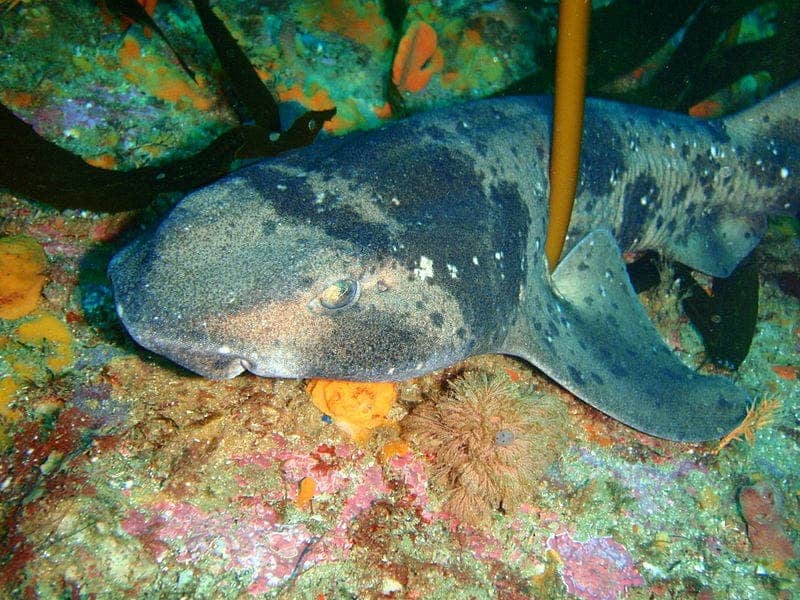Odd as it may seem, for a long time biologists have suspected that sharks never sleep because they’re always in motion in order to keep water rushing through their gills — that’s how they breathe. But scientists in New Zealand claim they finally have physiological evidence that some sharks do indeed sleep, entering a low-metabolism state during which they engage in a resting posture. However, you wouldn’t know it from their eyes, which stay wide open during slumber, perhaps another good reason why people used to think sharks never sleep.

New Zealand and Australian researchers studied seven draughtsboard sharks from the Hauraki Gulf. The draughtsboard shark – sometimes called the “carpet shark” – can stay stationary, resting on the seafloor, unlike many other sharks that must swim constantly to stay alive.
Over the course of 24 hours, the researchers carefully followed the sharks for signs of falling asleep. When a shark showed signs of resting, its metabolism and posture were immediately recorded. Over the course of this investigation, the researchers found that the sharks’ oxygen consumption significantly dropped while they were in a resting state for five minutes or longer. Lower oxygen consumption is a hallmark of a drop in metabolism, which in turn is a telltale sign of sleep.
Usually, the draughtsboard shark keeps its fins out and head up, ready for any unsuspecting prey it could ambush. But in its resting pose, the shark’s body flattens and hovers close to the seafloor.
In a previous study published last year by the same team of researchers, draughtsboard sharks held in tanks responded very slowly and awkwardly to disturbances if they had been still for a long time. These initial findings hinted that the marine predators may be slumbering, and prompted the researchers to start this new, much more sophisticated study. This time, the tanks were fitted with specialized instruments that monitor the oxygen the sharks were using.
The drop in metabolism was to be expected, judging by the way the sharks would often assume a flat position on the bottom of the tank. But it was surprising to find the sharks rarely bothered to shut their eyes while they snoozed. The draughtsboard sharks, which are nocturnal, spent most of their time asleep during the night with both eyes wide open. They occasionally doze off with their eyes shut during the day, which suggests the sharks do it because they mind the light rather than as a result of the sleep state itself.
It’s not clear at all whether other sharks sleep. Draughtsboard sharks are bottom feeders that hang out around the ocean floor and manually pump water over their gills, allowing them to stay stationary for at least some brief periods of time. Great whites and tiger sharks, however, must always keep swimming to ventilate their gills. Perhaps they too enter a low-metabolism, sleep-like state despite being in motion, but that’s yet to be verified.
If and how sharks sleep are important questions worth pursuing. Sharks are over 400 million years old — they’re older than trees — so understanding how these animals sleep could provide insights into the function of sleep overall, which is still rather poorly understood.
The results were published in the journal Current Biology.






